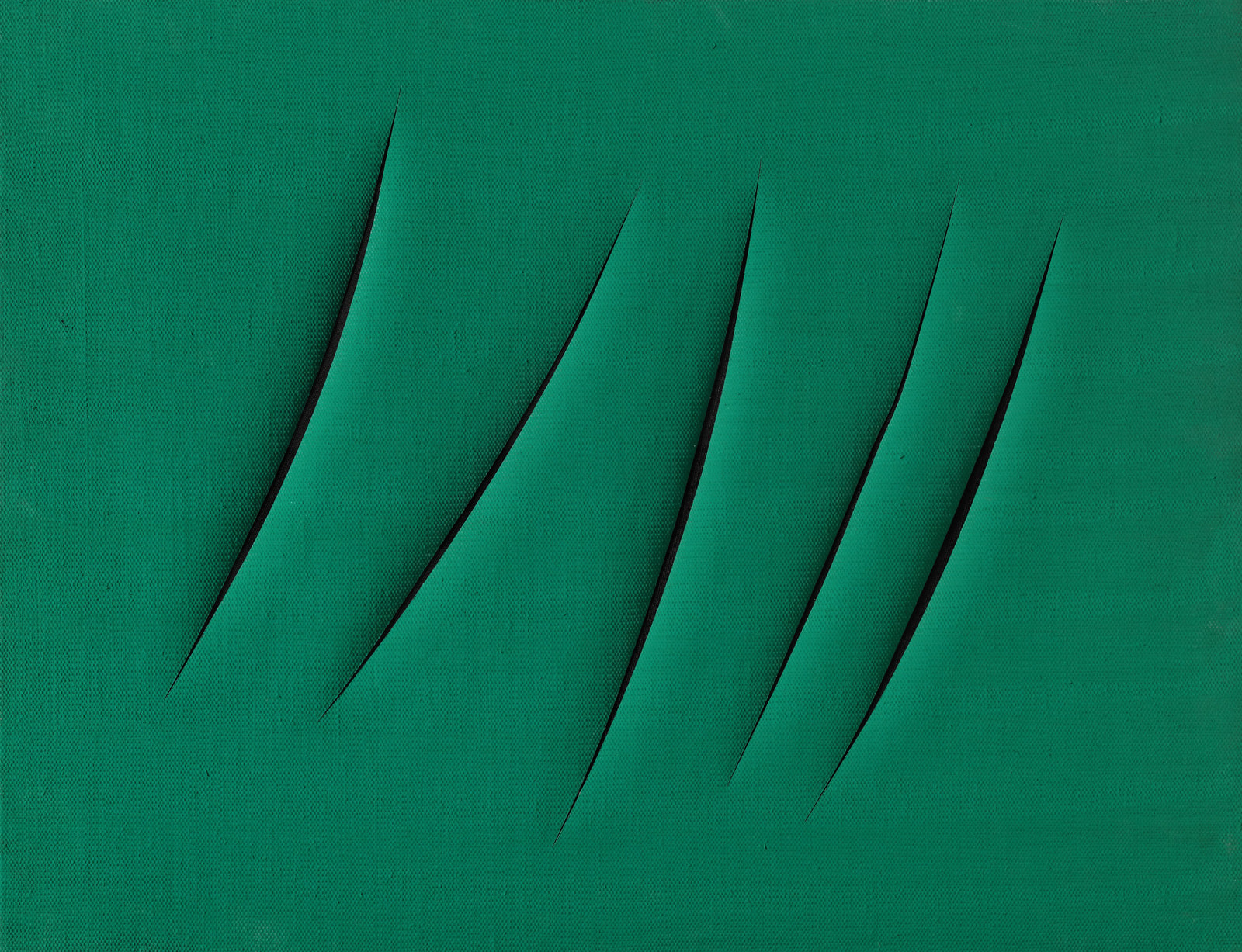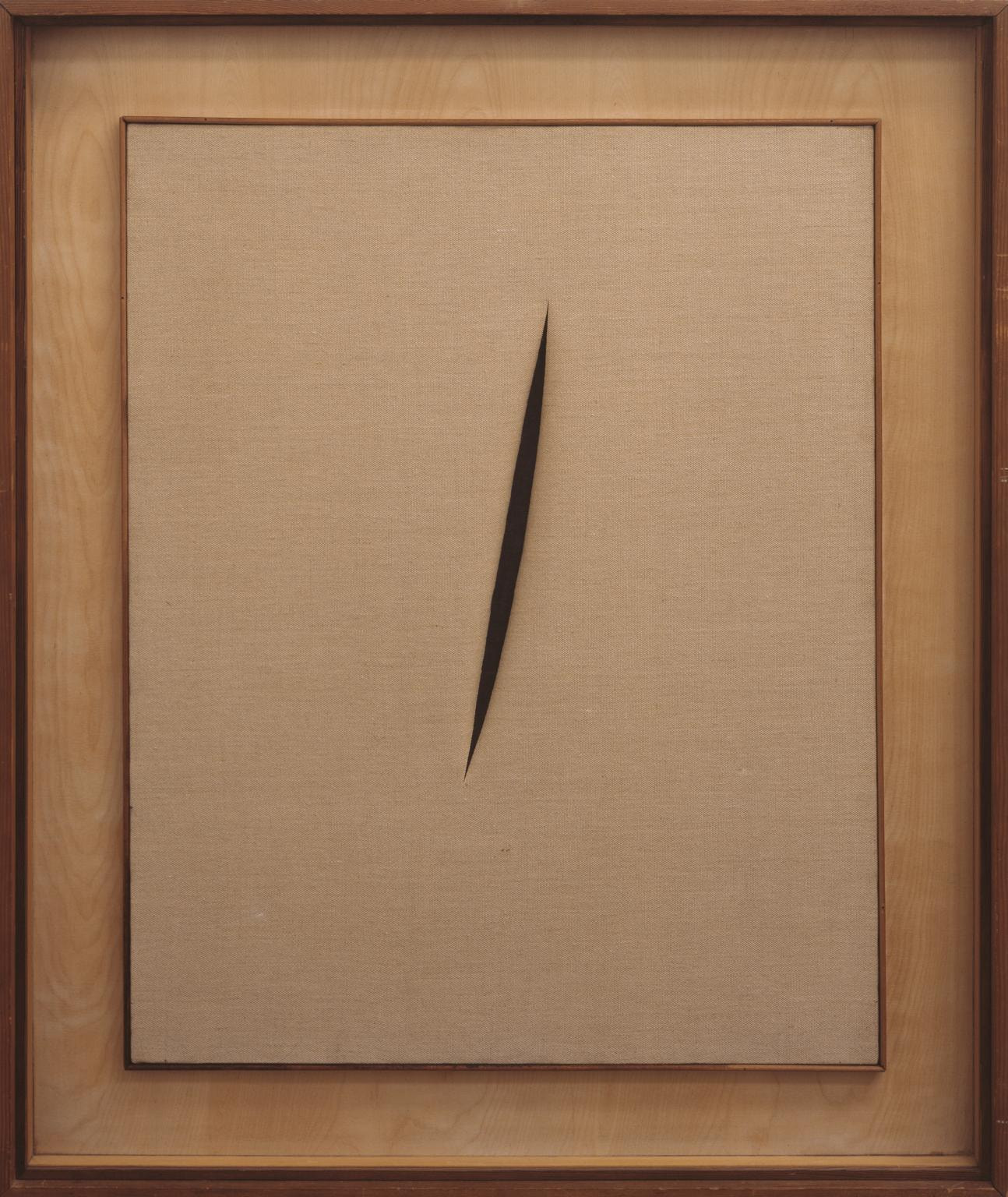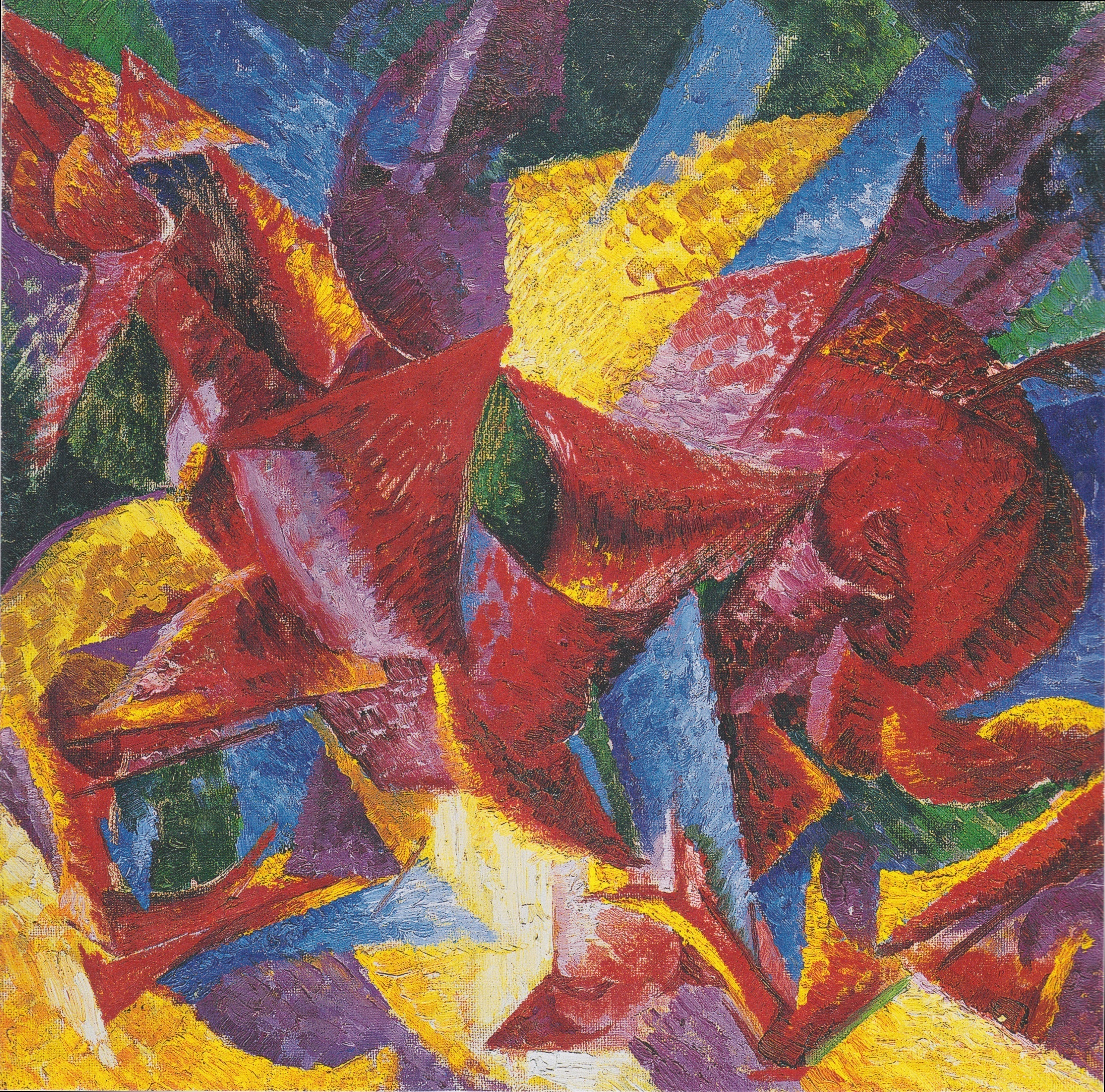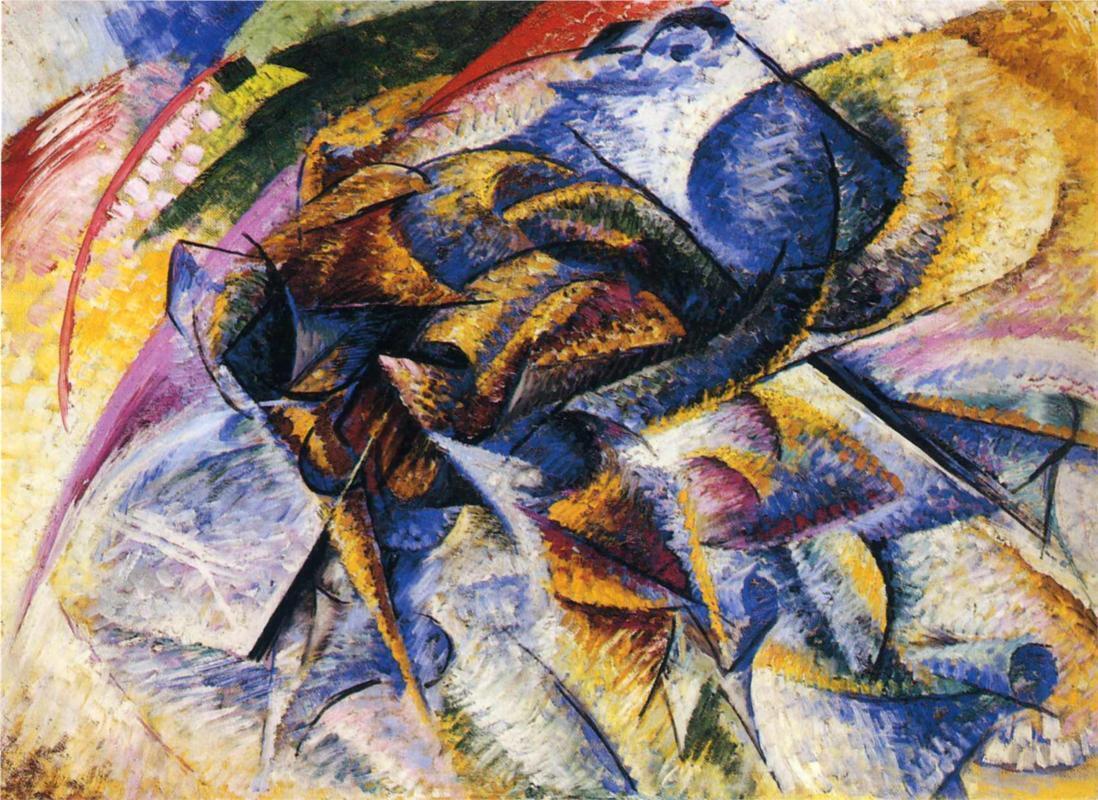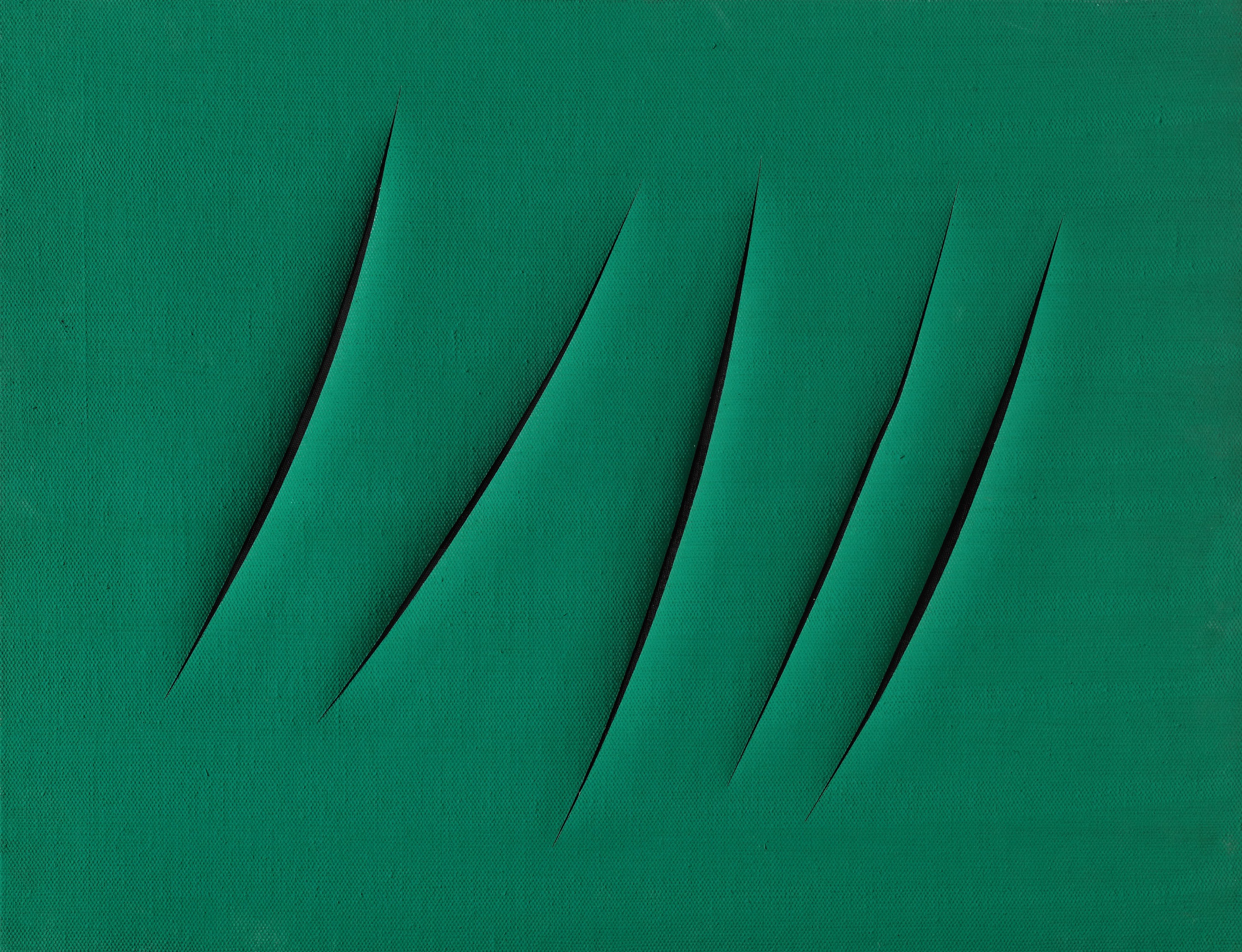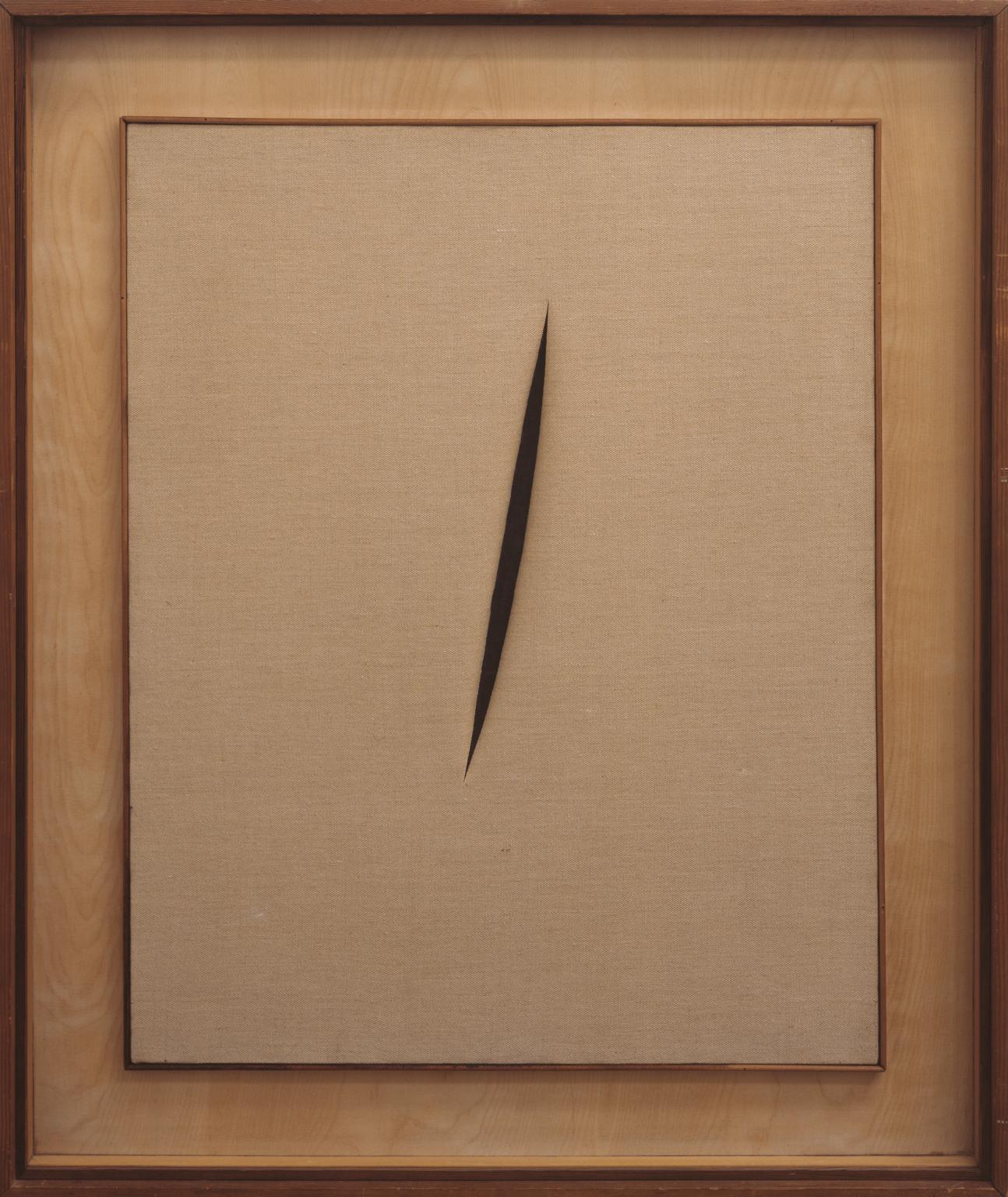This lecture is dedicated to two renowned historic and postwar Italian avant-gardes: Umberto Boccioni and Lucio Fontana. In addition to being fine artists, the two were also prolific writers, and had a number of breakthrough manifestos to their names.
Umberto Boccioni (1882–1916) was a sculptor and painter, one of the founders and leading figures of Italian Futurism. Influenced by poet Filippo Marinetti, the author of the first Manifesto of Futurism (1909), he wrote his own Futurist manifesto, Technical Manifesto (1910), dedicated to the fine arts. The dynamic forms of Boccioni’s early works acquired a more Cubist look following his visit to Paris in 1912. The artist was wounded during World War I, but died in 1916 after falling off a horse.
Lucio Fontana (1899–1968) was born in Argentina, where his emergence as a sculptor came about in the 1920s. However, Fontana’s practice is commonly associated with the second wave of the Italian avant-garde, in particular with his ideas that defined the postwar development of abstract sculpture and painting. Fontana is the author of a number of manifestos where he supports the interconnection of contemporary art and technology. His radical transformations of a traditional canvas—with razor cuts or piercing—have become some of his most recognizable experiments as a painter.
